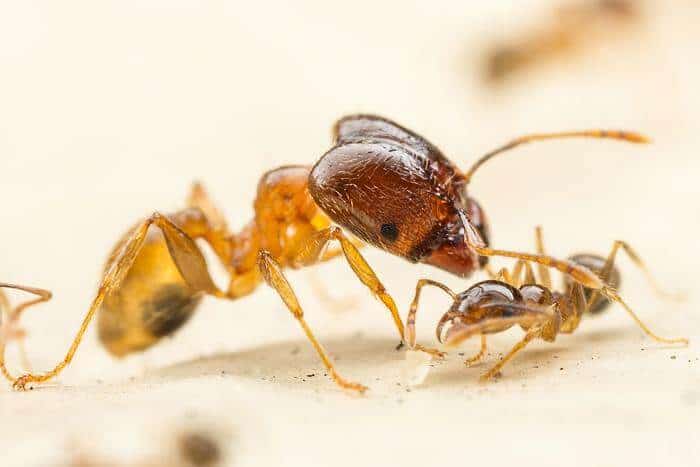In the pages of Marvel comic books, Ant-Man manipulates fictional subatomic particles in order to shrink and fight crime as one of Earth’s mightiest heroes.
In a real lab, biologists have now achieved similar shrinking results by manipulating ants’ DNA. The work won’t produce any superpowers, but it presents a useful model for understanding how environmental factors can influence DNA expression to create a range of outcomes in a population.
The work is published online in the journal Nature Communications. Sebastian Alvarado, a postdoctoral fellow at Stanford, conducted the research as a graduate student at McGill University, working alongside Rajendhran Rajakumar, and professors Ehab Abouheif and Moshe Szyf, all of McGill.
The experiment was designed as a means to study variation in quantitative traits. These are individual qualities, such as height or body weight, that can naturally vary across a defined range in a population. This variation is usually driven by the degree that environmental or other factors influence the expression of a particular gene, which makes ants an excellent test model.
In an ant colony, queens, workers and soldiers share similar genetics. But early in ant development, social, nutritional and chemical cues cause some genes to be more active, ultimately creating a wide range of body sizes, each specialized to a different task in the colony.
Many of these changes are controlled by DNA methylation, a process in which molecules are added to sections of DNA sequences. These additions affect how the DNA is interpreted and expressed, thus influencing an organism’s development or behavior.
“A lot of growth and development and sizing mechanisms that exist across the animal kingdom are found to be regulated by the same DNA methylation processes,” said
In the experiment, Alvarado and his colleagues at McGill exposed ant larvae to drugs that either increased or decreased the amount of DNA methylation. In doing so, they created ants that were larger within a caste and even significantly smaller than what exists in a natural population.
They then traced this size change to a specific growth factor gene, and found that across the population, varying degrees of DNA methylation to that gene directly corresponded to body size. A 20 percent modification in DNA methylation yielded a 20 percent change in body size, for example.
“This helps explain at a molecular level how continuums exist between two very discrete variables,” said Alvarado, who is now a member of biology Professor Russell Fernald’s lab at Stanford. “We can now look at diversity within a population by considering what expressions exist in between these variables and the actual molecular mechanism that controls that difference.”
Drawing a stronger connection between how environment and genetic factors influence DNA expression, Alvarado said, could have payoff in mapping the genetic basis of diseases and understanding evolutionary changes.


